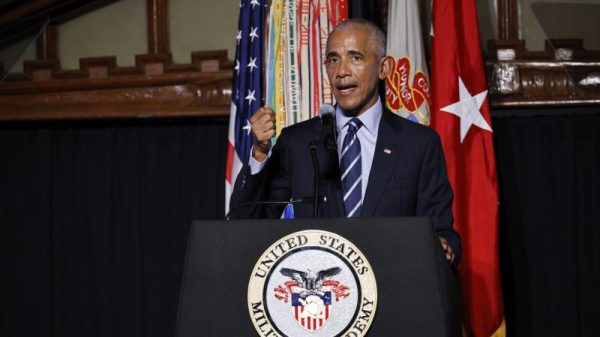Ever since Donald Trump came onto the political stage, elections in the United States have changed. They are more intense, certainly, and with a heightened sense of significance for many more voters. Those traits are likely to shape the 2024 presidential campaign, especially if Trump is the Republican Party nominee.
A new report by the Democratic data analytics firm Catalist provides a comprehensive analysis of the 2022 election. It confirms some earlier conclusions about the midterms but also includes some findings that run counter to conventional thinking.
The report finds that there were two elections in 2022: one in the highly contested states and another in states without competitive statewide contests. There was no national trend that produced swings across the board as in past elections. Where 2022 broke ranks with past midterm patterns, it favored Democrats.
Trump’s 2016 victory was a shock to the system and thrust the country into a new political era. Republicans have struggled since then. The 2018 election produced a century-high turnout for a midterm race along with a Democratic wave that knocked Republicans from power in the House. The 2020 election produced the biggest vote total in the history of the United States, putting President Biden in the White House and giving Democrats a narrow majority in the Senate.
The 2022 midterm election was another stunner. It produced a sizable turnout again, short of 2018 in total votes but nonetheless substantial and, contrary to historical patterns, did not result in the kind of gains that the party out of power, in this case Republicans, had expected. There was no red wave. Republicans captured the House but with a far narrower majority than anticipated. Meanwhile, Democrats added one seat to their 50-50 Senate majority, defying Republican hopes of taking control of that chamber as well.
About 111 million people cast ballots in 2022, compared with 118 million in 2018. But as the Catalist report notes, “Turnout matched or even exceeded 2018 turnout in the most highly contested elections in the country.” The report is the latest in a series produced by the liberal organization and is based on its extensive voter file maintained over many years. Though the firm works on behalf of liberal groups and causes, its election reports have been widely plumbed by independent analysts.
The roster of competitive statewide elections in 2022 was much the same as the key presidential battlegrounds in 2020. They include Wisconsin, Michigan, Pennsylvania, Georgia, Arizona and Nevada. These competitive states are almost certain to be the focus of campaigning in 2024. In 2022, there were highly contested statewide races either for Senate, governor or both in all six states, as well as in few others. The electorates in those states looked more like those of 2020 and 2018 than a typical midterm electorate.
In the most contested elections for Senate and governor, Democratic candidates got a slightly larger share of the two-party vote in 2022 than in 2020 and won 13 of 18 races that were listed as tossups or leaning toward one party or the other by the Cook Political Report with Amy Walter.
In several of the states with contested races, turnout was up by about 5 to 8 points compared with 2018. In several others, it matched those levels. In less contested Senate races, however, turnout was down by about 8 points. Only in Ohio, where there was a competitive Senate race won by Republican J.D. Vance, did turnout drop compared with 2018.
Younger voters played an important role in the success of Democrats in the most contested races, with Gen Z and millennial voters, generally those between ages 18 and about 40, turning out in higher numbers than in 2018 and giving Democratic candidates 60 percent of the vote. Historically, younger voters have been less likely to turn out in midterm elections, but since Trump was elected, that has not been the case.
Women comprise the other group critical to the success of Democrats. Overall, turnout among women in 2022 was down a point from 2018, and their support for Democrats dropped a bit. However, in the most contested Senate and governor races, support for Democrats among women was slightly higher than it had been even for Biden in 2020.
The Catalist analysis produced a surprising finding: In these contested races, Democrats made their biggest gains among White women without college degrees. Their support for Democratic candidates rose from 40 percent in 2020 to 45 percent in 2022, based on the two-party split of the vote. A majority of White women with college degrees, 57 percent, backed Democrats, and their support rose by a point in the last midterm election.
The biggest drop for Democrats came among White men with college degrees, both in House races nationwide as well as in contested Senate and governor races. In contested races, their support for Democratic candidates declined from 48 percent in 2020 to 44 percent in 2022. In all House races, their support for Democrats fell from 51 percent in 2020 to 44 percent last year.
Black voters, the most loyal group in the Democratic coalition, continued to support the party in huge numbers, with about nine of every 10 votes cast, but turnout among Black voters fell in 2022 from past midterms. In southern states with Black candidates on the ballot, support for Democrats among Black voters increased. Support decreased in the most contested races outside the South. The drop in support in contested races was most significant among younger Black voters.
Between 2016 and 2020, Hispanic support for Democrats decreased, prompting a debate about whether this represented a growing trend detrimental to Democrats. The 2022 results do not fully answer that question. Overall, Latino support for Democrats was about the same as in 2020.
In Arizona, however, Latino support for Democratic Sen. Mark Kelly was higher than it was for Biden in 2020. Meanwhile, support for Democrats in Florida fell from 2020 levels, with Republican Gov. Ron DeSantis and Republican Sen. Marco Rubio winning a solid majority of Hispanic voters.
Those results also highlight the diversity of Hispanic voters. In Florida, Cuban Americans are a dominant part of the Hispanic electorate and have historically favored Republican candidates. In Arizona and many states in the Southwest, Mexican Americans predominate and have historically favored Democratic candidates.
One other finding bears noting for 2024. Turnout in suburban areas was higher in 2022 than in 2018. Support for Democrats in suburban areas fell a bit nationwide, but in the contested races in the states where presidential elections are decided, it held steady at 54 percent. Nearly all of the most contested states from 2020 and 2022 will be competitive again in 2024. Based on the past three elections, turnout will be high in those states and higher turnout has been beneficial to Democrats since Trump was elected in 2016.
The Catalist report points to two factors as influencing the results in the 2022 election, both of which have been highlighted since last November and are relevant to the 2024 race. One is the role that abortion played in motivating voters, especially those opposed to the Supreme Court decision overturning Roe v. Wade.
There is no way to know for certain, but the abortion issue could be one reason some White women without college degrees moved toward Democrats last year. Will abortion continue to be a highly motivating issue? Was that demographic shift a one-time event?
The other factor is the perception of the Republican Party pushing an extreme agenda and being dominated by the election-denying Trump. Biden is already running on this message. Having worked for some in his party in 2022, Biden hopes it will work again for him in 2024. If Trump is the nominee, the odds are better that it will.
Some Democratic analysts believe the past three elections have shown that in this political era, their party has forged the superior election machine and the stronger coalition. The Catalist report highlights the challenges Republicans will face with a Trump-fueled electorate that is producing higher turnout that has led to Democratic successes in three straight elections.
But for Democrats, it poses some questions as well. Can their success in turning out younger voters extend to the next election? Would a rematch between Biden and Trump cause turnout to sag? Will White men with college degrees return to their 2020 levels of support for Biden? Small shifts in the right places can mean big changes in the results.
In 2020, Biden claimed victory in Georgia, Arizona and Wisconsin by less than a point and Pennsylvania by just over a point, while Trump won North Carolina by just over a point. That there are likely to be two elections in 2024, one in the contested states and another elsewhere, is a valuable contribution in helping to watch unfolding events. Still, the makeup and intensity of the electorate in the half-dozen or so states that will decide who wins the electoral college count is where everyone’s focus will be.































